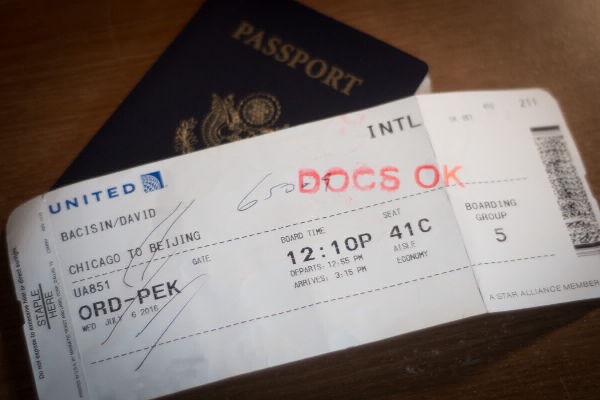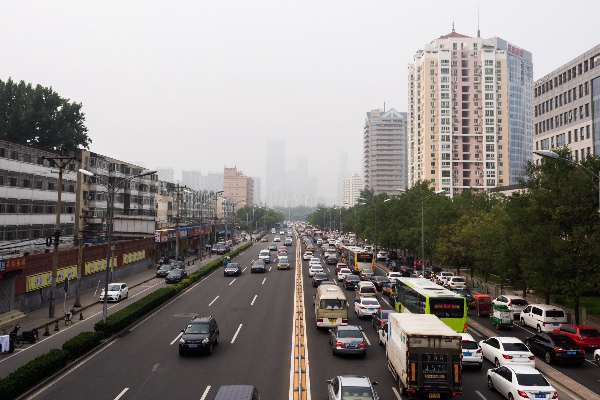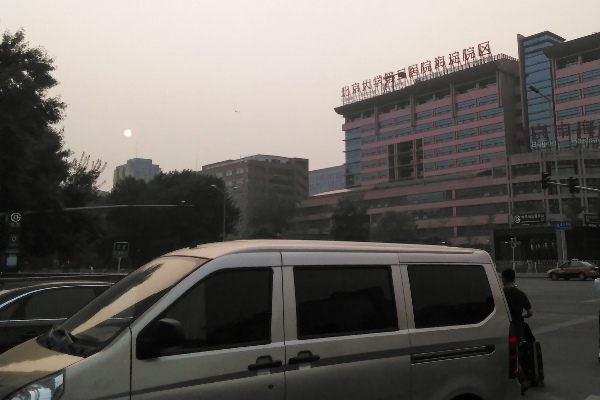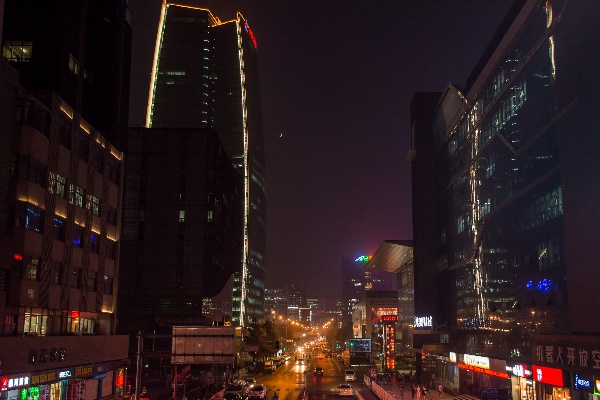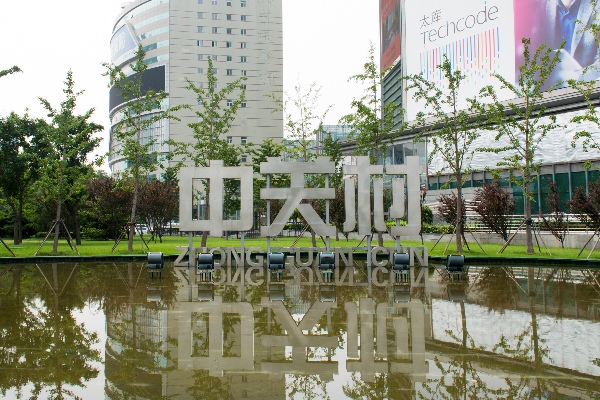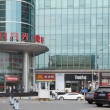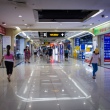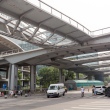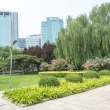Welcome to Beijing
It is 3:23 pm. I’ve just gotten off a 12 ½ hour flight from
Chicago, after learning what a short-checked bag
is and
stepping onto a Boeing 747 for the first time. I had spent
an hour and a half in Chicago waiting for my luggage to show up
from my Cleveland flight, grabbed a quarter-pounder with cheese
for lunch from McDonald’s, and gotten my visa approved with a
DOCS OK
stamp at the gate. Now that I am here,
in Beijing, I have no idea where to go, but I let my aching legs
follow the crowd of people along hundreds of meters of terminal
walkway.
DOCS OKstamp
As I look out the expansive windows of Beijing Capital International Airport, I wonder how the pilot could have seen to land: the outside air is thick with yellowish-white smog. Still walking, walking, looking for some indication of what to do next — but finally the ceiling swells upward, and there are the lines.
I scan the signs: Chinese nationals, no, diplomatic, no, immigration, possibly, transits out of this terminal, no, transits out a different terminal, still no, no more planes right now, please — so I get in the long line for immigration. I fill out the immigration card, pose for the picture, and get stamped through. Success!
Once again wandering and wondering, I spot a sign that says,
Baggage claim: Take train to T3.
Train? TRAIN?
I take the escalator past the sign and sure enough, light rail
trains are carting people off the platform — but judging
by a few others’ facial expressions, I’m not the only one
confused by the whole system. I pile onto the next train,
wonder who is driving because I sure don’t see a place for
a driver to sit, and ten minutes later arrive at Terminal 3.
There are a disturbing lack of signs for baggage claim.
Following the crowd, I enter a huge room with the largest and
longest bag carousels I’ve ever seen. After 15 minutes I spot my
bag and yank it from the pile, then head over to something that
looks like an exit…but only sort of. It says, Customs,
but not many people are going through it — I read the signs
again and glance around, and there, a hundred meters away on the
other side of the room, are the very large Customs
signs, with a much longer line of people. I roll my luggage over,
double-check that I had nothing to declare, step through
the metal detectors, and then send my baggage through the X-ray
scanner. With no response from the security personnel
(is it OK to go? Yes? No?), I loiter a few seconds and then
decide to continue on, through a maze of hallways until —
Railings groan as they hold back hundreds of people, like levees in a flood. I see faces, signs, more faces and more signs, but no one I recognize and none holding my name. I am supposed to call someone named Chen — whom I’ve never met — to pick me up from the airport, but I certainly don’t have cell service. Finally, as I come to the end of the parted sea, I hear someone say,
David?
I look around and see one familiar face, a face I have seen only once before in a picture from a conference call: Michael. Michael introduces me to the person standing next to him, Jesse, who has replaced Chen at the last minute. C’est la vie.
Jesse leads us to his car, and his driver — yes, this Chinese twentysomething has a driver — shimmies us through traffic to our destination: the Haidian district.
